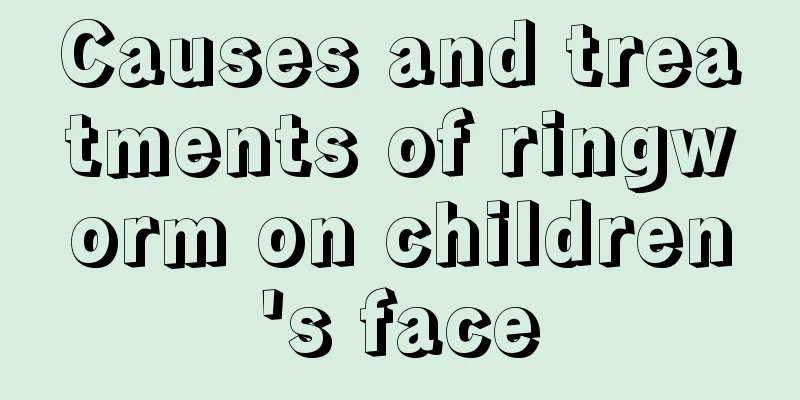Treatment of Mycoplasma pneumonia in children

|
Mycoplasma pneumonia in children is a type of pneumonia. Generally speaking, this type of pneumonia is the result of a long period of time without treatment after being infected with mycoplasma in children, or it can easily be caused by a fever or cold. Therefore, young parents should pay attention to all aspects of their children, and treat colds and fevers as soon as possible. They should not delay, because children are most likely to get sick during this period, so they need the careful care of their parents. 1. General treatment (1) Respiratory tract isolation: Mycoplasma infection can cause small epidemics, and the time for children to excrete mycoplasma after becoming ill is long, up to 1 to 2 months. Infants only show symptoms of upper respiratory tract infection. Pneumonia occurs only after repeated infection. At the same time, it is easy to be infected with other viruses during the MP infection period, which may lead to worsening of the disease and prolonged illness. Therefore, respiratory isolation should be achieved as much as possible for children with the disease or children with a history of close contact to prevent reinfection and cross-infection. (2) Nursing: Pay attention to rest, nursing and diet. If necessary, you can take a small amount of antipyretic drugs and Chinese medicine (see Bronchitis). Keep the indoor air fresh, keep the room temperature at 18-20℃, and the relative humidity at 60%, and provide easily digestible, nutritious food and sufficient fluids. Maintain oral hygiene and clear respiratory tract, frequently turn the child over, pat the back, and change body position to promote the discharge of secretions. If necessary, suction the sputum appropriately to eliminate viscous secretions. (3) Oxygen therapy: Oxygen therapy should be given promptly to patients with severe symptoms of hypoxia or airway obstruction. The method is the same as for general pneumonia. 2. Symptomatic treatment Other symptomatic treatments are the same as those described in the bronchitis section. (1) Expectorant: The purpose is to make the sputum thinner and easier to discharge. Otherwise, it is easy to increase the chance of bacterial infection. However, there are few effective expectorants. In addition to increasing turning over, patting the back, nebulization, and suctioning sputum, you can choose expectorants such as bromhexine (Bisouping) and acetylcysteine (Tanyijing). Since cough is the most prominent clinical manifestation of Mycoplasma pneumonia, frequent and severe coughing will affect the sleep and rest of children. Sedatives such as chloral hydrate or phenobarbital can be given appropriately. Small doses of codeine may be given to suppress cough as appropriate, but not too often. (2) Stop asthma: For patients with severe asthma, bronchodilators can be used, such as oral administration of aminophylline 4-6 mg/(kg·d) once every 6 hours; salbutamol (Albuterol) can also be used for inhalation. 3. Application of antibiotics According to the microbiological characteristics of MP, antibiotics that can hinder the synthesis of cell walls of microorganisms, such as penicillin, are ineffective against mycoplasmas. Therefore, antibiotics that can inhibit protein synthesis should be used to treat MP infection, including macrolides, tetracyclines, chloramphenicol, etc. In addition, lincomycin, clindamycin (clolindamycin), vancomycin and sulfonamides such as sulfamethoxazole (SMZ) are available for selection. Mycoplasma are sensitive to macrolide antibiotics, and erythromycin is the preferred drug. Through the above introduction to the general treatment of mycoplasma pneumonia in children and the detailed introduction to symptomatic treatment, we hope that parents should take care of your children to prevent them from contracting diseases such as mycoplasma pneumonia. Because this disease cannot be underestimated, we should also prevent the occurrence of such diseases as early as possible, and create a comfortable and healthy environment for children in terms of their lives and diet! |
<<: Treatment of pneumonia in children
>>: What is physiological jaundice in children?
Recommend
How to tell if jaundice is high
Newborn jaundice is a normal physiological phenom...
When does the baby start to defecate after using the enema?
Suppository is a medicine specifically for consti...
Does your child’s eczema itch?
Babies may suffer from eczema due to allergies or...
Treatment of baby eczema skin disease
Children's skin is relatively delicate, and o...
How to treat bronchiectasis in children
Speaking of bronchiectasis, I believe everyone is...
Is the technology for treating cerebral palsy in children good?
If cerebral palsy in children is not treated in t...
What to do if you are allergic to milk
Many babies are allergic to milk due to physical ...
23-month-old baby development indicators
From the birth of a newborn to the time the child...
What are the nutritious breakfasts for children and how to make them?
During the growth process of children, the nutrit...
Frequent urination in children
Frequent urination is very common. Many people ur...
At what age is it normal for babies to start growing teeth?
Babies will grow teeth when they reach a certain ...
Diet therapy for iron deficiency anemia in infants and young children
Iron deficiency anemia in infants and young child...
Four tips to distinguish colds and pneumonia in children
The symptoms of pneumonia are very similar to tho...
What to eat for children to nourish their brains
With the continuous development of modern society...
What is the reason for the red spots on the baby's feet?
If your baby has red spots in the morning, it may...









